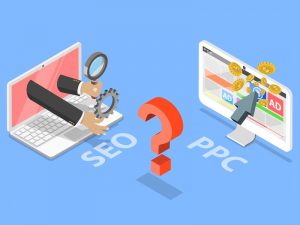 The success of almost any business rests on the quality of its marketing efforts – and these days, their online presence can make or break a companies’ ambitions. With ecommerce quickly becoming one of the fastest growing niches, it’s no wonder that tools such as search engines are relied upon more and more as a result.
The success of almost any business rests on the quality of its marketing efforts – and these days, their online presence can make or break a companies’ ambitions. With ecommerce quickly becoming one of the fastest growing niches, it’s no wonder that tools such as search engines are relied upon more and more as a result.
Working with Google is undoubtedly the most popular way for you to boost views and sales, with good rankings equalling not only more, but better quality traffic; sending the potential for sales through the roof.
Making the most of Google’s potential
SEO is a powerhouse of techniques that work to boost a website in a search engine’s eyes, giving a business the opportunity to enjoy a good standing in both their niche and local area. So, here are some basic tips to ensure the success of these endeavours.
Identify your website and show Google who you are
The first thing to do is to work out who you are and what you are offering – and then build your SEO to suit. After all, if you sell handmade items, make sure to focus on that appeal. Identifying a search phrase for each of your web pages can benefit your site.
Sometimes, a less-obvious keyword can spell the difference between success and failure; especially if it has a good volume of searches each month. Less competitive terms can also hone your website’s ability to get the visitors you really want.
After you have chosen the keyword or search phrase you are targeting for each page, feature these terms in both your Page Title and your URL to maximise impact for search engines. Be sure that every page possesses written content, so that Google understands what your page is really about.
Having a website that only has images can prove to be detrimental, as Google will have no information to work with to assess its niche (and therefore rank your site accordingly).
Make use of essential tools for ranking
When a website is secure, visitors are more likely to trust it, so making use of https can change the way that you are viewed by those who hope to purchase your goods.
Signing up to Google Webmaster Tools can offer you behind the scenes access to check your website for errors and to evaluate the performance – often making it far more tailored to the requirements of search engine algorithms.
Creating a sitemap through this platform can help Google to identify each page individually too, allowing for a more thorough investigation into relevance and quality for ranking.
Making use of Google My Business will enable you to create a business listing that will feature at the top of Googles results when business in your niche and area are searched for – and this can work to propel your website, even if your site doesn’t automatically feature on the first page.
And these are just a small selection of ideas that can help you to maximise the impact of your ecommerce efforts.
Additional ways to boost your ranking
Social networks can transform the way a website is evaluated by search engines, so creating business profiles and pages for all of the major social networks, as well as remaining active on each, can be a great way to enhance your online visibility. It’s also possible to create dedicated shop pages that can link back to your own site via platforms like Facebook.
In addition, having an active blog can make a huge difference to your SEO endeavours – and writing regular posts and sharing them across social networks can maximise reach in a way that is all but unrivalled.
It may be a good idea to write articles and reviews about your products, your business and your efforts to grow; as submitting these for other blogs to publish can add another layer of relevance and reliability for search engines to work with.
As the practices involved in SEO are competitive and ever-evolving, it can be difficult to keep up with all of the above on your own. If you would like help, why not speak to one of our SEO experts today, to ensure that you are getting the most up to date information and latest techniques to help with your initial, ongoing and continued success.

 When it comes to online success for businesses, understanding search engine marketing is the key to thriving in the digital marketplace. While there are numerous strategies available to market your business online, a perennial debate exists between whether Search Engine Optimisation (SEO) or Pay Per Click (PPC) is more effective.
When it comes to online success for businesses, understanding search engine marketing is the key to thriving in the digital marketplace. While there are numerous strategies available to market your business online, a perennial debate exists between whether Search Engine Optimisation (SEO) or Pay Per Click (PPC) is more effective.
